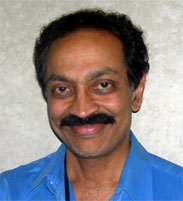Here is something to unsettle your conviction that there is any real ‘self’ reading these words. V.S. Ramachandran (https://en.wikipedia.org/wiki/Vilayanur_S._Ramachandran) shows how strikingly simple experiments can illuminate the ways the brain establishes the illusion of a self.
In avuncular style, he snatches territory from philosophers on the certainty of knowledge. In one experiment, stroking an amputee’s cheek produces sensations in his ‘phantom limb’ because the part of the brain’s map that once related to the lost limb has ‘invaded’ the adjacent brain area that relates to the cheek. Ramachandran explains how the brain is a busy lump of genetic hard-wiring serving as a biological control centre. He shows how it is an organ that can continuously ‘re-map’ in response to new sensory information.
Equally fascinating are Ramachandran’s ‘mirror tricks’ on amputees and paralyzed patients that begin to reveal how much the brain relies on context and comparison as well as on interior neural connectivity to form a sense of self. Most disquieting is proof that much brain activity, including what we like to think of as uniquely human behaviour, happens unbidden. Goodbye free will. ‘De-throning man’, as the author points out, is at the heart of most scientific thought since the Enlightenment.
If you enjoy your thought to be challenged, this is the book for you. There are photos and line drawings throughout. Check if this book on the human brain is in stock at your local library by consulting the online catalogue at https://www.sllclibrary.co.uk/cgi-bin/spydus.exe/MSGTRN/OPAC/BSEARCH
328 pages in William Morrow
First published 1998
ISBN 978-0688152475

V.S. Ramachandran

